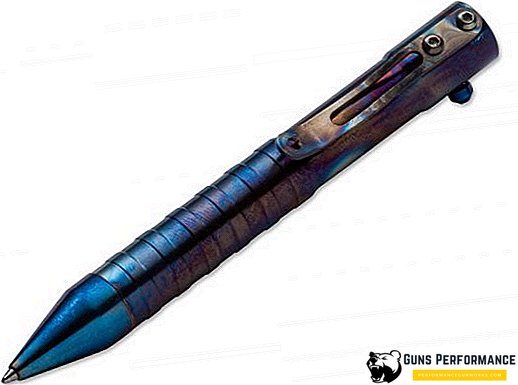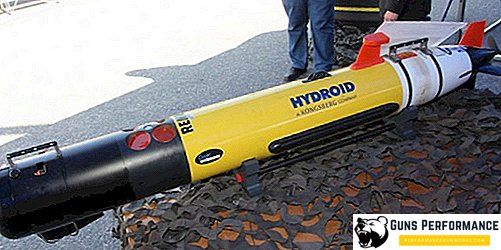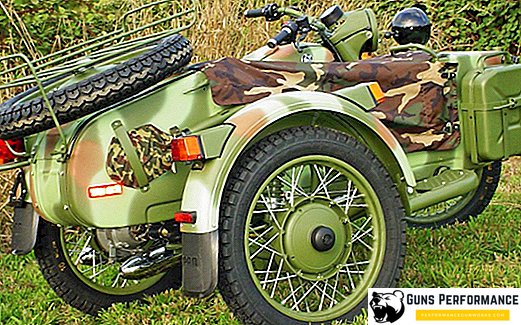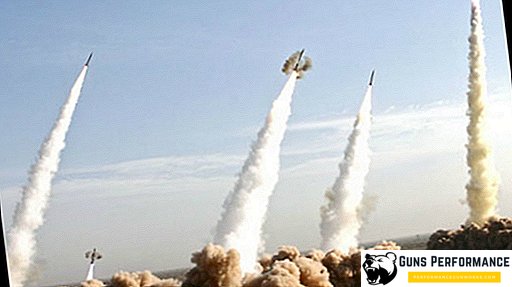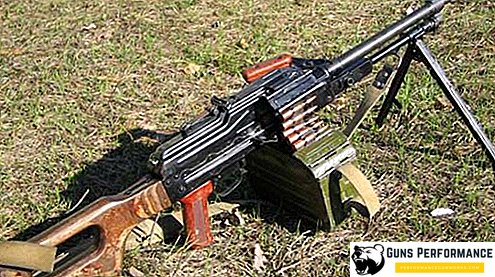Knife-serbosek came up in the Republic of Croatia during the Second World War. This is a rethought version of the specific blade previously used in agriculture. Translated from the Croatian language, the name "Serbosek" sounds like "serborez", because such blades were used to kill Serbs and Jews in concentration camps. The knives of a special action had a grip on the arm and a blade on the outside. There were Serboreza as a "handicraft" and factory production. The most famous producer of this cold weapon was the German company Solingen, which released a batch of blades at the base of its knitting knife.
The story of the appearance of the killer knife

The knife, intended for the mass murder of Serbs, appeared after the contest of the Government of Croatia for the best weapons for executioners, allowing to cut hundreds of defenseless prisoners, while tired as little as possible. Ante Pavelic, the leader of the Ustashe party and the Poglavnik of Croatia from 1941 to 1945, played the main role in the creation of this blade.
Having used such a weapon several times during punitive operations, the Ustashi improved it, replacing the blade with a longer and sharper blade. It was this handicraft version of the peasant knife that became the model for serial serborez.
The precursor of the blade of the Croatian nationalists

Knife for knitting of sheaves is an agricultural hand tool intended for works on the thresh of sheaves. With it, it was possible to easily cut the band of the sheaf, while not letting it go. The main characteristics of the predecessor Serbosek:
- The knife had no handle, instead there was a support plate or belt clip;
- The plate fits snugly to the palm and is attached to it using a belt system or leather gloves;
- The blade is about 5-7 cm long, while it is curved and sharpened from the inside.
The tip is rounded, making the sheaf knife safe to handle. The blade is not sharpened into a razor, because it could lead to injury to the owner.
Similar agricultural implements are not known in Russia, they were found in Germany, Austria and other places in western Europe, where they had different names:
- Garbenmesse (chopping knife);
- Garben-Aufschneidemesser (knife for cutting threads);
- Kornmesser (grain knife).
In cases of robbery at the peasant, he could protect himself with a blade in the palm of his hand, although it was very difficult to make it with a short blade. Knives for tying sheaves lost their importance after the widespread introduction of mechanized cleaning, eliminating hand knitting.
Why precisely serbosek?

Nationalism is a terrible disease, it turns the citizens of one country into irreconcilable enemies, defending their ideals with a weapon in their hands. During World War II, the Ustashi gladly took advantage of the ideas of Nazi Germany and declared several nations to be destroyed:
- Serbs;
- Roma;
- Jews.
All of them were to be destroyed in the Jasnovac camp and other similar places.
The use of cold weapons for the killing of the Gentiles had ancient roots in Croatia and adjacent areas. The despised enemy was dying not from military weapons, but from an economic object, thereby indirectly confirming his status — a peasant or a slave. For such purposes, an excellent knife for sheaves, which had a long-established shape. Having received a batch of Serborez ordered by the Croatian Government and made during the war in Solingen, Germany, the Ustashi began to compete with each other in cruelty. After the war, the surviving Serbs with a shudder recalled the terrible blades of executioners.
Ustasha's terrible weapon

During the Second World War, Croatian Ustashi often organized cruel entertainment in prison camps. In one of the competitions, executioner Petar Brzitsa personally slaughtered 1,360 Serbs, receiving a golden watch for this from the Catholic chaplain. According to the Croatian executioner Zhila Friganovic, the most effective were blades longer than 25 cm. The murderers slaughtered people all night long, enjoying the suffering of the Serbs.
The revival of the instrument of death
In the period of the breakup of Yugoslavia, Croatian nationalists revived many of the Ustasha traditions. In the early 1990s, they actively used Serboseks in the fight against Serbs and Bosnians on their territory. The behavior of the Ustasha for them has become a model.
To many Russian war correspondents, the Serbs showed entire warehouses of such knives, sometimes refined: welded hammers, extra blades, sharp pins.
The Serbian military, remembering the fate of their ancestors in previous conflicts, in 1991-2001 also did not differ in peace towards the Croats.
Currently, the Serbosechi are kept in the museums of the Second World War. There is an opinion that nationalist-minded Croats who consider Ustashi as heroes try to get a serborez, which is for them a symbol of the struggle for their country.


